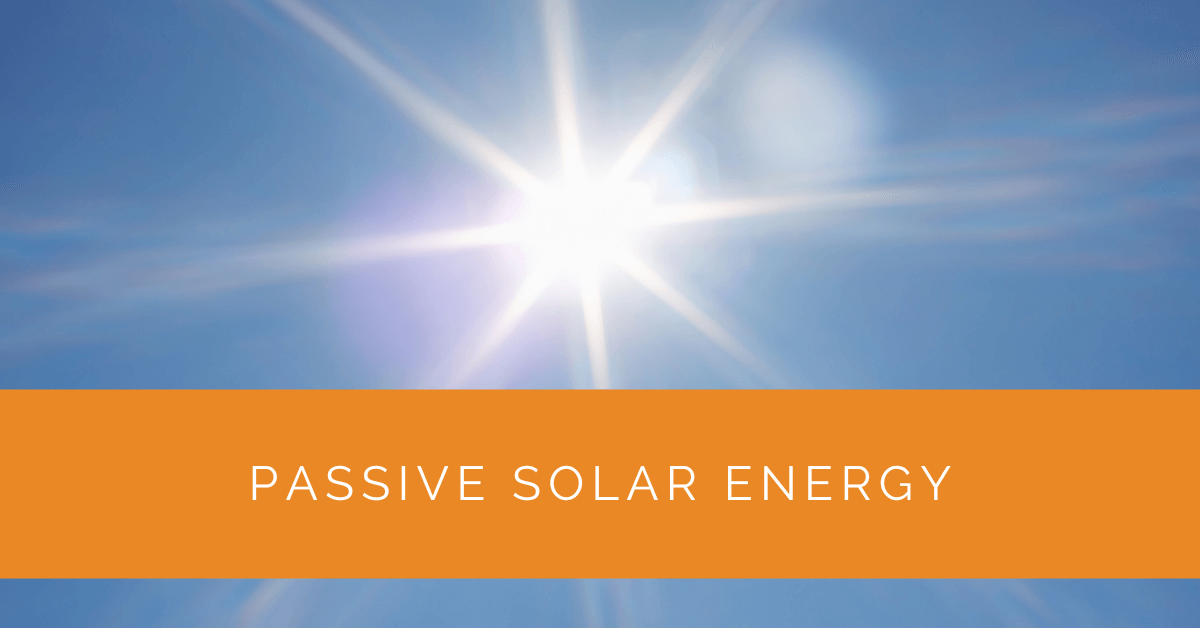Passive solar energy is a powerful solution in the quest for sustainable architecture and energy-efficient buildings. Using design elements and principles, passive solar energy can harness the sun’s energy for heating and cooling. In this article, we will delve into the concept of passive solar energy, exploring its benefits, design strategies, and techniques for maximizing solar heat gain and minimizing heat loss.
Contents
- 1 Key Takeaways
- 2 Understanding Passive Solar Design
- 3 Passive Solar Heating
- 4 Passive Solar Cooling
- 5 Implementing Passive Solar Energy in Buildings
- 6 Benefits of Passive Solar Energy
- 7 Case Study: Implementing Passive Solar Energy in a Residential Project
- 8 Expert Insights From Our Solar Panel Installers About Passive Solar Energy
- 9 Experience Solar Excellence with Us!
- 10 Conclusion
- 11 FAQ
Key Takeaways
- Passive solar energy utilizes design elements and principles to naturally harness the sun’s power for heating and cooling buildings.
- Passive solar heating involves strategic orientation, thermal mass, and insulation to maximize solar heat gain and minimize heat loss.
- Passive solar cooling techniques include shading, natural ventilation, and nighttime thermal mass cooling to maintain comfortable indoor temperatures.
Understanding Passive Solar Design
Passive solar design is a holistic approach that utilizes the natural elements of sunlight, ventilation, and thermal mass to heat, cool, and illuminate buildings. The core principles of passive solar design include orientation, insulation, and the strategic placement of windows. By incorporating these elements, buildings can optimize energy efficiency while providing a comfortable living space.
Passive Solar Heating
Passive solar heating focuses on capturing and utilizing solar heat to warm living spaces. The design strategies for passive solar heating revolve around maximizing solar heat gain during colder months. Key elements include:
Orientation: South-Facing Windows
It can receive ample sunlight throughout the day by orienting a building with many south-facing windows. South-facing windows act as “solar collectors,” allowing sunlight to enter and heat the space.
Thermal Mass
Utilizing materials with high thermal mass, such as concrete or water, helps absorb and store the solar heat from the south-facing windows. This stored heat is gradually released, warming the interior spaces after sunset.
Insulation
Proper insulation is essential to minimize heat loss. By insulating walls, floors, and roofs, the heat generated within the building is retained, reducing the need for additional heating.
Direct Gain Systems
Direct gain systems are a common passive solar heating technique. They involve allowing sunlight to enter the living space through south-facing windows directly. As sunlight enters, it is absorbed by thermal mass materials and converted into heat, which radiates into the room.
Passive Solar Cooling
Passive solar cooling focuses on maintaining comfortable indoor temperatures during hot weather. Design strategies for passive solar cooling aim to minimize heat gain and promote natural ventilation. Key elements include:
Shading and Overhangs
Strategically designed shading elements, such as overhangs or blinds, can prevent direct sunlight from entering the building during hot periods. These shading devices help reduce solar heat gain and keep the interior spaces cooler.
Natural Ventilation
Promoting natural airflow and ventilation is crucial for passive solar cooling. Well-placed windows and vents allow for air exchange, facilitating the removal of hot air and the introduction of cooler air from shaded areas.
Thermal Mass for Nighttime Cooling
Thermal mass can also aid in passive cooling. By absorbing excess heat during the day, thermal mass materials release stored heat at night when outdoor temperatures drop. This process helps cool the interior spaces naturally.

Implementing Passive Solar Energy in Buildings
To implement passive solar energy effectively, several considerations must be taken into account:
Geographic Location and Climate
Different geographic locations and climates require specific design adaptations. Factors such as solar orientation, prevailing winds, and temperature variations must be considered to optimize passive solar design.
Window Placement and Glass Area
The placement and size of windows play a crucial role in passive solar energy. South-facing windows allow for maximum solar heat gain, while carefully designed windows on other sides of the building facilitate cross-ventilation and cooling.
Strategic Shading
The positioning of shading elements, such as overhangs, awnings, or blinds, is vital to block direct sunlight during hot periods and prevent overheating.
Insulation and Air Sealing
Proper insulation and air sealing help reduce heat loss during winter and heat gain during summer. This ensures that the interior spaces maintain a comfortable temperature and minimize the need for mechanical heating or cooling systems.
Benefits of Passive Solar Energy
Passive solar energy offers numerous benefits for buildings and occupants alike:
- Energy Efficiency: By harnessing the sun’s energy, passive solar design significantly reduces the need for traditional heating and cooling systems, resulting in lower energy consumption and costs.
- Comfortable Living Spaces: Passive solar design provides a consistent and comfortable indoor environment with minimal temperature fluctuations.
- Reduced Environmental Impact: By relying on renewable energy from the sun, passive solar energy reduces greenhouse gas emissions and promotes sustainability.
Case Study: Implementing Passive Solar Energy in a Residential Project
Background
At Solar Panels Network USA, our mission is to provide sustainable and energy-efficient solutions through innovative solar technology. In this case study, we explore a residential project where we implemented passive solar energy design principles to maximize energy efficiency and occupant comfort.
Project Overview
The project involved designing and constructing a new residential building with the primary goal of utilizing passive solar energy for heating and cooling. Our objective was to create a home that could naturally regulate indoor temperatures, reducing reliance on traditional HVAC systems and minimizing energy consumption.
Implementation
Orientation and Window Placement
We strategically oriented the house with a significant number of south-facing windows. This orientation ensures that the building receives maximum sunlight during the winter months, providing natural warmth. The windows were designed with double glazing to enhance insulation and reduce heat loss.
Thermal Mass
To store and distribute solar heat effectively, we incorporated high thermal mass materials such as concrete and stone within the building’s floors and walls. These materials absorb heat during the day and slowly release it at night, maintaining a comfortable indoor temperature.
Insulation and Air Sealing
Proper insulation was a key focus to minimize heat loss and gain. We installed high-quality insulation in the walls, roof, and floors. Additionally, we ensured that the building was well-sealed to prevent air leaks, further enhancing its energy efficiency.
Shading and Overhangs
To prevent overheating during the summer, we designed overhangs and installed shading devices. These elements block direct sunlight from entering the windows during peak summer months, while still allowing light during the winter when the sun is lower in the sky.
Natural Ventilation
The building was designed to facilitate natural ventilation. We strategically placed windows and vents to promote airflow, allowing cool air to enter and warm air to escape. This design ensures that the house remains cool during the summer without the need for mechanical cooling systems.
Results
Energy Efficiency
The passive solar design significantly reduced the home’s reliance on artificial heating and cooling systems. During the winter, the house maintained a comfortable temperature through solar heat gain, and in the summer, natural ventilation and shading kept the indoor environment cool.
Cost Savings
Homeowners experienced substantial savings on their energy bills. The reduced need for HVAC systems translated into lower electricity consumption, providing long-term financial benefits.
Environmental Impact
By utilizing passive solar energy, the project contributed to a reduction in greenhouse gas emissions. The building’s design promotes sustainability by minimizing the use of non-renewable energy sources.
Occupant Comfort
The occupants enjoyed a consistently comfortable living environment with minimal temperature fluctuations. The natural light and warmth provided by the passive solar design enhanced their overall living experience.
Summary
Our residential project demonstrated the effectiveness of passive solar energy in creating energy-efficient and comfortable living spaces. We achieved significant energy savings, cost reductions, and environmental benefits by strategically designing the building to harness and utilize the sun’s power. Passive solar energy proves to be a sustainable and viable solution for modern architecture, promoting a greener future and enhanced occupant comfort. At Solar Panels Network USA, we are committed to continuing our efforts in integrating passive solar principles into our projects, contributing to the advancement of sustainable living.
Expert Insights From Our Solar Panel Installers About Passive Solar Energy
Passive solar design is a game-changer for sustainable architecture. By harnessing natural sunlight and heat, we can create buildings that are not only energy-efficient but also comfortable to live in.
Senior Solar Installer
Implementing passive solar heating techniques like thermal mass and strategic window placement drastically reduces the need for artificial heating, making homes more eco-friendly and cost-effective.
Renewable Energy Specialist
Shading and natural ventilation are key elements of passive solar cooling. These techniques allow us to maintain indoor comfort without relying heavily on air conditioning systems.
Lead Solar Technician
Experience Solar Excellence with Us!
Trust in Solar Panels Network USA, where our seasoned experts deliver top-quality solar solutions for homes and businesses nationwide. With a legacy of countless successful installations and a commitment to sustainable energy, we’re your reliable partner in the solar journey. Ready for a brighter, eco-friendly future? Call us now at (855) 427-0058 and harness the power of the sun!
Conclusion
Passive solar energy is a remarkable approach to naturally harnessing the sun’s power. Through strategic design elements and principles, buildings can benefit from passive solar heating and cooling, resulting in energy-efficient and comfortable living spaces. By embracing passive solar energy, we can contribute to a greener future while enjoying its many advantages in terms of cost savings, environmental impact, and enhanced comfort.
FAQ
What is passive solar energy?
Passive solar energy uses design principles and elements to naturally capture and utilize solar heat and light in buildings without mechanical systems. It involves strategic orientation, thermal mass, insulation, and shading to maximize energy efficiency and comfort.
What are examples of passive solar?
Passive solar design includes south-facing windows to capture sunlight, thermal mass materials such as concrete or water to store and release heat, strategic shading devices to prevent overheating, and natural ventilation for cooling.
What is passive or active solar energy?
Passive solar energy uses design elements to harness and utilize solar energy naturally, without mechanical systems. On the other hand, active solar energy involves using solar panels and solar water heaters to convert solar energy into electricity or heat.
How does passive solar work?
Passive solar works by utilizing design strategies that allow buildings to harness the sun’s energy for heating and cooling. South-facing windows and thermal mass materials absorb and store solar heat during the day, while insulation and strategic shading prevent heat loss or excessive heat gain. Natural ventilation and nighttime cooling techniques further contribute to maintaining comfortable indoor temperatures.
About the Author
Solar Panels Network USA stands at the forefront of solar energy solutions, driven by a team of seasoned solar engineers and energy consultants. With over decades of experience in delivering high-quality solar installations and maintenance, we are committed to promoting sustainable energy through customer-centric, tailored solutions. Our articles reflect this commitment, crafted collaboratively by experts to provide accurate, up-to-date insights into solar technology, ensuring our readers are well-informed and empowered in their solar energy decisions.

